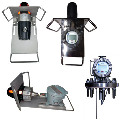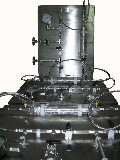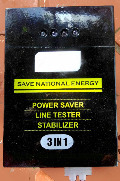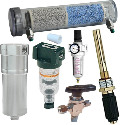TECHNOSAVVY
Facts you should know about Gas Detection using catalytic principle

Posted on: 01:27 PM - 24 Apr 22
| technosavvy has added a new Products: Duct Mounting Kit for Gas Detectors |
Write a comment | Share this
Posted on: 01:14 PM - 16 Jul 21
| technosavvy has updated a Products: Sampling System for a Toxic Gas Detection System |
Posted on: 08:08 PM - 02 Jun 19
| technosavvy has updated a Products: Closed Loop Sampler |
Posted on: 08:05 PM - 02 Jun 19
| technosavvy has added a new Products: Closed Loop Sampler |
Posted on: 06:05 PM - 16 Sep 17
| technosavvy has added a new Products: Power Saver |
Posted on: 06:00 PM - 16 Sep 17
| technosavvy has updated a Products: Gas Sampling & Conditioning Accessories |
Posted on: 05:53 PM - 16 Sep 17
| technosavvy has updated a Products: Gas Sampling & Conditioning Accessories |
Posted on: 05:52 PM - 16 Sep 17
| technosavvy has added a new Products: Gas Sampling & Conditioning Accessories |
Posted on: 08:29 PM - 08 Sep 17
| technosavvy has uploaded a video |
Updated on: 10:51 AM - 27 Jan 17 Posted on: 10:51 AM - 27 Jan 17
| technosavvy says "Facts you should know about Gas Detection using catalytic principle" |
Write a comment | Share this
( 1 comment )
Vikas Dattatraya Sawant multitude of complaints about gas detection instruments, much of these issues are caused by high humidity and the inability for the sensors to provide accurate readings. Selection of gas detection should be made by someone who is qualified and experienced. Much of the time the procurement of equipment is decided on price.
SENSOR TECHNOLOGY
Catalytic Combustible Gas Sensors .These sensors look for explosive atmospheres. They detect combustible gases by causing an actual combustion of gases within the sensor chamber.
Catalytic sensors offer good linearity, and can react to most combustible gases. However, as resistance change to %LEL is quite small, they work better in concentrations between 1,000 and 50,000 PPM. They do not measure trace amounts of gas (under 200 PPM) and therefore are of no use in determining toxic levels.
The disadvantages are
They must have a minimum of 14% oxygen content in the air to work accurately
The sensor can be damaged by silicones, dust,oils lead or other poisons
The readings can be affected by humidity and water vapour condensation
They respond poorly to low energy hydrocarbons such as oil vapours, kerosene, diesel fuel and commercial jet fuels
They tend to loose their linearity after a year or so
They are not recommended for use in an acetylene atmosphere
The flame arrestor will prevent ignition of most gases except acetylene outside the sensor. It is extremely important to check the approvals for which type of hazardous locations the detector can function in.
CALIBRATION
Gas sensors start losing accuracy soon after they are manufactured as a normal result of exposure to air and other gases. The loss of accuracy is called “sensor drift. “Older sensors and those that have been exposed to high concentrations of their target gas (the gas that the sensor is designed to detect) have greater sensor drift. Calibration is one way to compensate for sensor drift. During the calibration, a sensor is exposed to a specific concentration of target gas. Because of sensor drift, the amount of gas the sensor detects will differ from the amount of target gas to which the sensor was actually exposed. calibration determines the difference and adjusts the instrument readings up or down to compensate. Regular calibration is necessary to ensure accurate readings
Most manufacturers recommend that their gas sensors be calibrated monthly and after a significant gas exposure. Check your operations manual for the recommended operations calibration schedule.7 years ago
Customised Sampling Systems
TechnoSavvy designs and manufactures a complete line of liquid samplers, gas samplers, ambient air samplers and sample coolers. These systems sample toxic and/or volatile organic chemicals and process streams, and prevent the escape of emissions into the atmosphere.
Our Sampling System unit performs these tasks while safely obtaining representative and contamination-free samples. All sampling systems - whether gas samplers, liquid samplers, ambient air samplers or custom samplers, can be built to operate manually or automatically and are designed to meet hazardous area classifications if applicable. And remember...custom design services are available!
Gas Detection Systems
TechnoSavvy Ambient Gas Monitoring Systems
TechnoSavvy provides a comprehensive line of gas detection systems, designed to safeguard against a wide range of flammable gases, asphyxiate and toxic gases for personnel and industrial gas hazards associated with confined space entry, chemical processing and handling, packaging, waste processing, oil & gas production and refining, and Food & Beverage manufacturing.
Fixed and portable systems are supplied, capable of detecting a wide range of toxic gases, VOCs, flammable gases, C02, and O2. TechnoSavvy’s fixed detection systems include single and multiple-point configurations. We supply portable gas systems capable of monitoring up to four gases simultaneously. A variety of gas monitoring system accessories are also available.
TechnoSavvy is focused on the business of providing high specification and cost effective gas detection systems to all market sectors.TechnoSavvy also specialise in providing comprehensive service and maintenance solutions on gas detection systems, whether they are our own, or other manufacturers products
As well as supplying our own range of gas detection systems, TechnoSavvy can supply a wide range of other gas detection products, ensuring our customers receive a best-engineered gas detection system to suit their specifications.
TechnoSavvy designs and manufactures a complete line of liquid samplers, gas samplers, ambient air samplers and sample coolers. These systems sample toxic and/or volatile organic chemicals and process streams, and prevent the escape of emissions into the atmosphere.
Our Sampling System unit performs these tasks while safely obtaining representative and contamination-free samples. All sampling systems - whether gas samplers, liquid samplers, ambient air samplers or custom samplers, can be built to operate manually or automatically and are designed to meet hazardous area classifications if applicable. And remember...custom design services are available!
Gas Detection Systems
TechnoSavvy Ambient Gas Monitoring Systems
TechnoSavvy provides a comprehensive line of gas detection systems, designed to safeguard against a wide range of flammable gases, asphyxiate and toxic gases for personnel and industrial gas hazards associated with confined space entry, chemical processing and handling, packaging, waste processing, oil & gas production and refining, and Food & Beverage manufacturing.
Fixed and portable systems are supplied, capable of detecting a wide range of toxic gases, VOCs, flammable gases, C02, and O2. TechnoSavvy’s fixed detection systems include single and multiple-point configurations. We supply portable gas systems capable of monitoring up to four gases simultaneously. A variety of gas monitoring system accessories are also available.
TechnoSavvy is focused on the business of providing high specification and cost effective gas detection systems to all market sectors.TechnoSavvy also specialise in providing comprehensive service and maintenance solutions on gas detection systems, whether they are our own, or other manufacturers products
As well as supplying our own range of gas detection systems, TechnoSavvy can supply a wide range of other gas detection products, ensuring our customers receive a best-engineered gas detection system to suit their specifications.
Overview:
Address:
172-A, B.T. Compound, Nr. Anjali Kitchenware Factory, Malad west,
Mumbai - 400 064,
Maharashtra, India
Websites:
Email:
sales@technosavvy.co.in
Phone:
91 022 46006818
Create a new Page
for companies, colleges, celebrities or anything you like.Get updates on MyPage.
Create a new Page
Find your friends
Find friends on MyPage from
 All Updates
All Updates








 Posting your question. Please wait!...
Posting your question. Please wait!...